The belief that we must not reconstruct badly damaged buildings is based on outdated readings of Ruskin and William Morris, writes Andy Foster
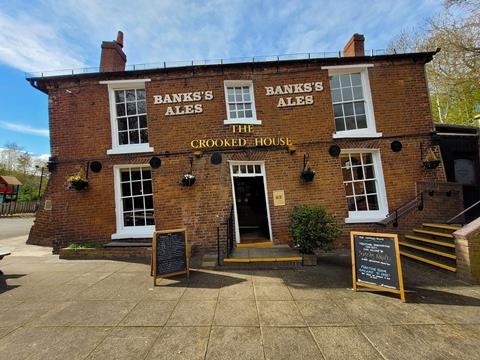
The fire and demolition at the Glynne Arms – or as we all call it, the Crooked House – have revived the old debate about re-creating lost buildings. Andy Street the Mayor of West Midlands, among others, has called for the pub to be rebuilt brick by brick. Joe Holyoak in BD says that would produce a “worthless fake”.
It’s a measure of the resurgence of Modernism in the present century, that the idea that reinstatement is somehow morally wrong has come back, along with the condemnation of using traditional styles as ‘pastiche’. Twenty years ago, both had shrunk away so much that they were almost confined to lecturers in schools of architecture. Now they’re commonplace again, as they were forty or fifty years ago.
In the 1990s, the National Trust employed good conservation architects to reinstate the fire-ravaged interior of Uppark, with results that delighted everyone but the architectural establishment. The critic Hugh Massingberd may have been a fogey but he had a nose like a bloodhound for fakes.
He said “I set off fearing that I would find dear old Uppark, with its idiosyncratic combination of shabbiness and grandeur, all spick and span and sparkling new… Nothing could better epitomise the purpose and point of the National Trust… than this triumphant restoration”.
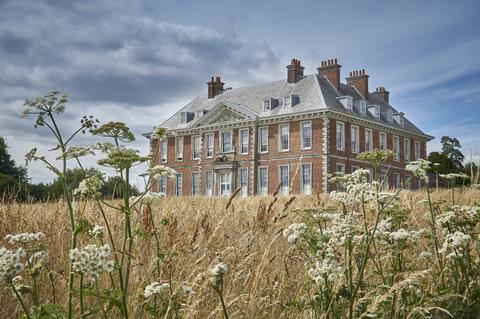
In 2015 the Trust suffered an equally devastating fire, at an even greater house, the early eighteenth century Clandon, by Giacomo Leoni.
Despite early comments that the interiors, especially the crucially important Marble Hall, could be restored, with plasterwork skills learned at Uppark, the Trust now proposes to use a big firm of commercial architects – a rather good firm, but big and commercial – with conservation architects only as consultants, and leave the interior as a wreck, with suspended walkways, to “transform the visitor experience”.
The arguments against rebuilding, and the appeals to Ruskin and William Morris, have hardly altered in nearly a century, since Pevsner wrote “Pioneers of Modern Design”. Joe Holyoak summarises them pithily: Ruskin calling church restoration “a destruction accompanied with false description of the thing destroyed”; Morris calling for protection instead of restoration.
The problem is that Ruskin and Morris wrote a century and a half ago and in very particular circumstances. Victorian architects like James Fowler of Louth, and Gilbert Scott when he left it to clerks in the office, were descending on mediaeval churches and renewing them almost completely, when their original fabric could have been repaired.
Often they added gestures of their own which they thought improved the buildings. This is what Morris meant when he attacked “lifeless forgeries” by architects with “no guide but each his own individual whim to point out to them what is admirable and what contemptible”.
As a corrective we can remember that Ruskin talked of the “innocent eye”. The eye dictates what we see and if that is good to the eye, it will be right. Even better, we can look at what architects inspired by Ruskin and Morris actually did when faced with ruinous buildings.
John Pollard Seddon, the Victorian Goth of South Wales (though his most original work, the South Italian Romanesque fantasy at Hoarwithy, with its sequence of fascinating spaces, is in Herefordshire) was a devoted Ruskinian and the brother of a minor Pre-Raphaelite.
The problem is not Ruskin or Morris. It’s the dogma still taught in schools of architecture.
When he repaired the chancel of Brecon Priory, now Christ’s College chapel, “I laid its tottering north wall stone by stone on the turf and set it up again and might defy anyone to tell it had been touched”. Philip Webb himself did much reinstatement at Eglwys Cummin.
Charles Canning Winmill, a younger but close friend of Webb, is best known for his progressive L.C.C. fire stations of around 1900. (Boris Johnson as Mayor of London flogged off the best of them, Eton Avenue, for flats.)

In 1928 he was asked to repair the ruins of Chingford Old Church, which had decayed for nearly a century. The nave roof had gone. Most of the south wall had to be taken down. The brick south porch was leaning far out of the vertical.
The mediaeval arcade had collapsed and only part of one arch could be re-used. The thirteenth century south door had fallen in. The interior was a mess of weeds and fallen-in graves.
Winmill rebuilt the south wall using nearly all original fabric, brick by brick. The new nave roof has king posts and scissor trusses, inspired by the thirteenth century but simple and straightforward. “The new arcade was formed of concrete, cast on the site… The piers are of Doulting stone, with caps and bases similar to the old ones but in no way a copy.”
In exactly the same process which will be needed at the Crooked House, the site foreman, Mr. Cadwell, “collected all the old stone [of the south doorway] and fitted it together on the chancel floor and found the arch complete.” Pevsner’s innocent eye in the 1954 ‘Essex’ saw a “Late c13 s arcade with circular piers and double-chamfered arches. The external features Perp”.
The problem is not Ruskin or Morris. It’s the dogma still taught in schools of architecture. Winmill did not have Modernism to show him the light, but now of course we do.
“Pioneers of Modern Design” is nearly a century old, over half as far away as Ruskin. No architectural historian would now accept it without serious qualification. Pevsner came to see its limitations, but history taught to architecture students is still founded upon its ancient shibboleths.
Buildings must be of the style of our age and any attempt at traditionalism is ‘pastiche’. Apply that to reinstatement of demolished fabric and you get the attacks on re-creating the Crooked House.
A very good repairing architect I know, recently added an extension to a particularly famous and important grade I church. It is traditional in form and materials without quoting motifs (a Gothic window was moved from where an old wall had to broken through): quiet, but successful and popular with visitors, the kind of thing Winmill did.
It won an RICS award. I asked him about architectural awards. He gave me a sad look.

It’s remarkable how different practice is in Europe, where ruination has been so much more common: the rebuilding of central Warsaw after the war, and more recently the re-creation of the Frauenkirche in Dresden.
Sadly, I will probably never see it, but the story, with the Nobel prize money, is inspiring, and good photographs suggest that the quality of the rebuilding is formidable. There really is a whiff of Brexit about this insular British attitude to reinstatement.
The old part of the Crooked House is small, just the leaning front range. The rest is late twentieth century work by Banks’s brewery.
The original bricks are on site, and probably enough of the woodwork mouldings to re-create them accurately. The Flemish Stretcher Bond brickwork and all the details are recorded in many photographs.
It will need money – are you listening, Mr. Street? – to employ a excellent conservation architect and craftsmen, especially bricklayers, but it can be done. The skills learned at Uppark, which the National Trust has rejected at Clandon, are still there.
Joe Holyoak seems to wish fakes upon us, when he suggests that even if the great buttresses were rebuilt, the building would have to be “made structurally stable without them”. It stood up for a century and a half. It could stand again without any subterfuges.
And then we will be able to say, as Winmill said of Chingford Old Church when he had finished, “with all its wounds dressed, it is still old.”
>> Also read: The Crooked House is gone. It can’t be reinvented
>> Also read: The loss of the Crooked House pub reveals that built heritage is about a lot more than buildings
Postscript
Andy Foster is an architectural historian and author of the Birmingham Pevsner City Guide and the Pevsner Buildings of England architectural guide to Birmingham and the Black Country


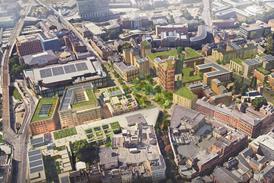
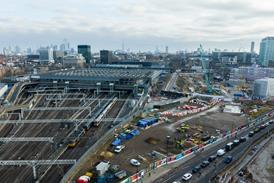
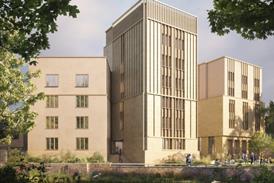











6 Readers' comments